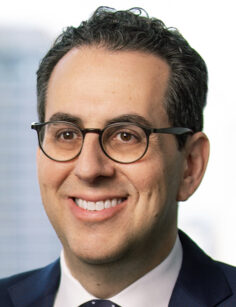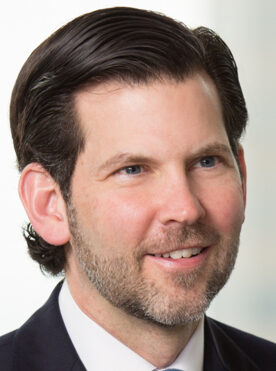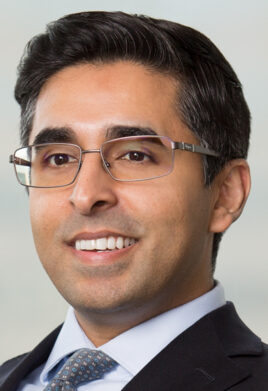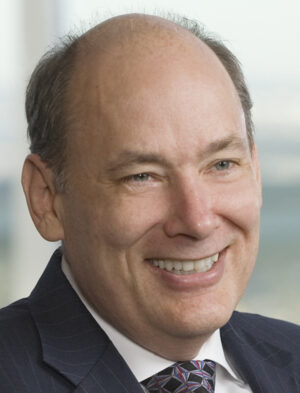The Houston office of Latham & Watkins wasn’t a year old by the time Ryan Maierson came to his epiphany.
The Latham office opened in February 2010. But as the year played out, he remembers marveling alongside the other partners at Baker Botts at the surprising ease with which this “non-native” firm from Los Angeles folded itself into the provincial pool of Texas transactional law.
Other national firms had planted a flag in Texas: King & Spalding in 1995. Skadden in 1993. Weil in 1987. But with Latham, the second most profitable firm in the world, something was different. In less than a year, Latham had accomplished what no other national firm had yet managed: to scare the bejeezus out of the rock-solid native Texas firms that had dominated the landscape of Texas corporate law.

“In that first year I watched not only my own reaction, but the reaction of my partners and the partners of the other native Houston firms go from skepticism to belief to absolute terror,” Maierson said.
“What they had,” said Maierson, “was the right approach to selling a global platform to the oil patch that was resonating in a way that I never expected it would. There are lots of law firms that are not native Texas law firms that have been here for a long time here with a post office that have never gotten very big; or where they get really big in flush times and really small in bust times; but they never really penetrated the upper echelons of the transactional work the way that Latham immediately did out of the gate.”
The sense of a changing reality struck Maierson during a management presentation in January 2011 that ultimately focused on Latham. They described in some detail the Latham pitch for its platform that had emerged from potential Baker Botts clients, both where they had been successful and where they had not.
What Maierson did not hear was what Baker Botts management wanted to do about it. He turned toward a partner sitting next to him and whispered: “We need to get the [imagine word] out of here.”
“I was the world’s easiest lateral partner hire,” says Maierson. “I called the partners who were here [at Latham] and asked: ‘Can I please come over and interview?’ I had no headhunter. I didn’t wait to be asked. I literally started calling to ask to be interviewed.”
By April 2011, Maierson ended his nearly 10-year run at Baker Botts with a move to Latham.
Latham formally opened its Houston office on Feb. 15, 2010. But the field work it took to get them there began as early as 2007, and by late January 2010, it was a nearly open secret that Latham had already poached eight well-established partners from three different law firms: seven for the Houston office and one to New York.
That original seven has grown to more than 130 in Texas: 111 in Houston and another 25 in their Austin outpost which opened in 2021. More to the point: the Houston outpost has advised on over 3,000 matters valued at $2.7 trillion.
The first public announcement of Latham’s move into the Lone Star State came on Jan. 11, 2010, in a blurb identifying a trio of well-known transactional energy partners: Michael Dillard and Michael Chambers from Akin and Sean Wheeler, Maierson’s colleague at Baker Botts.
The next salvo came in February with the announcement that Vinson & Elkins was losing four partners to Latham: Bill Finnegan, Charles Carpenter, Brett Braden and Tim Fenn. Finnegan, Braden and Fenn were heading to the new Houston office. Carpenter, who had been approached by Latham as early as 2007, was headed to New York.
Fenn says he and the others had been contemplating the move for some time.
“If you go back to about 2008, Latham had been nosing around the Houston market and knew something about what was going on here — the law firms, the people, that sort of thing. There was a couple of us that had started talking to Latham, but then there was the downturn.”

“The Downturn” is a polite way of describing the Great Recession, when the bottom dropped out of the housing market and the global economy took a plunge with it. In 2007, Latham became the first U.S. firm to report $2 billion in annual revenue. Skadden followed a month later. But by December 2007, the economy had already begun to decline into what became the Great Recession by the end of 2008.
Fenn said the talk of a Latham office in Houston had dimmed significantly during the first half of 2009. The “downturn” directly affected Latham, which was criticized for laying off 440 lawyers and other staff. “Getting Lathamed” inside the legal community’s emerging social media outlets became a verb.
“There was enough that it got people to start thinking about the prospect [of] what could really happen if [the opening of a Latham office] was something that could be actionable. But then we had the downturn and that sort of got chilled.”
The economy began to bottom out — or at least the legal market began to recover — and by the summer of 2009, groups of partners were once again discussing the prospects of a proper Latham outpost. Most realized that they were at the point in their careers when they had to make the move.
Latham had a massive, international platform of lawyers involved in every conceivable kind of practice in ways that the firm tethered to Texas. They could build a broader practice of their own with a broader client base and work side-by-side with some of the best talent in the business.
“Bill Finnegan and I started talking and we both felt that it would be incredible. We had sort of independently decided that we might regret NOT doing something like this,” Fenn said.
Law firm consultant Kent Zimmermann says the impulse for achievers to want to be among achievers is endemic in the legal profession. “Very often, rising high performers want to practice with other rising high performers. It’s an attraction [in] which large, profitable firms hold an advantage. They can offer an environment that is sometimes more important than money. They want to be among people where they think they can thrive.”
The downside?
“There was no playbook for this: opening an office of an international law firm whose roots were not in Texas. There was not that much that had been done, and what had been done was done on a very small scale,” Fenn said. “And it had never been done by a firm that had intentions to build a stable office that was going to rival any of the offices of any other firm.”
The obstacles were more than they might seem. With the eruption of national interest in the Texas legal market over the last decade, it would be tempting to imagine that its outsize presence among national firms is something new. But even 50 years ago, Texas-founded firms — especially those based in Houston — held a formidable, if provincial, national scale.
In a major profile of the Houston legal market by Texas Monthly in 1973 (“Empires of Paper”), writer Griffin Smith Jr. pointed out that three of the nation’s ten largest law firms at that moment could be found in Houston: Vinson & Elkins (186 lawyers), Fulbright Crooker & Jaworski (185 lawyers) and Baker & Botts (160 lawyers). V&E and Fulbright were ranked #3 and #4.
Each maintained its own cadre of clients and professional self-image — not unlike the markets of, say, New York, Chicago and Boston; but for the lawyers, work mostly swung between energy and banking and the structure of legal practices, legal recruitment and client maintenance was country club operating on fraternity rules in a work day spent between the tick-tock rote of hourly billing and the three-martini lunch.
Maierson recalled the profile and endorsed it. “Ninety percent of the culture reflected in that article was still true in 2010,” said Maierson. “The last 15 years, all that has changed. Latham didn’t cause that change; but Latham has certainly been on the forefront of that change.”
Nick Dhesi is a native Houstonian and graduated from the University of Texas School of Law. During the recruiting process, he recalls a senior partner at another firm who tried to emphasize the exclusivity of an event he was invited to attend.

“I just had the feeling that what was being communicated was how good it was to be on the inside and this aura of having influence; but that was very much the opposite of how I wanted to practice law.”
He was studying on the West Coast and interviewed the next week at Latham, where he found the opposite to be true.
“Everybody was so interested in the rest of the people around them. Everybody was so transparent and incredible humble. I think that’s what drew me to Latham.”
He spent the first two years with Latham on the West Coast at roughly the time when Latham was building its presence in Houston.
“All you ever heard at firm gatherings was how well Houston was doing; how dynamic the partners were and how many big deals were being done in the market,” Dhesi recalled.
At some point, the recruitment process became a kind of Mobius loop. Partners from competing firms were engaging, even conspiring, to make the Latham Houston office a fact. They not only had to trust each other, they had to make sure that they were all after the same thing.
Says Fenn: “Those of us who were beginning the discussion of this knew that if we were going to be successful, we were going to have to create concentric circles among partners from major law firms that didn’t necessarily know each other perfectly but had some interaction with each other and respected each other and were interested in creating an office that was not just another office of Vinson & Elkins or another office of Baker Botts.”
There were times when the timing wasn’t quite right. Fenn recalls a breakfast with Michael Dillard, who at the time was at Akin.

“Michael Dillard had an incredible reputation in energy M&A. So, he called me to find out whether I would consider becoming a lateral to Akin. What he didn’t know was that I went on the breakfast because we were thinking about trying to see whether he would come to Latham. So, we had a breakfast where the whole time he was trying to sell me on Akin and the whole time I was trying to assess do I want this guy to be a partner of mine if we can get Latham going.”
The process, Fenn said, worked to create a bond among the first wave of partners, a bond borne of carrying their mutual and secret load.
“It could have gone wrong very easily. But the whole group sort of trusted each other,” said Fenn. “It ended up setting the stage to begin working together and later on to think about how we could grow.”
And now, 15 years after changing the landscape in Texas, growth is the issue.
“Latham has had a great run,” says Zimmermann. “They were the first break open the market dominated by V&E and the other big indigenous Texas firms. But now there is competition from other big firms, like Kirkland and Sidley that have the talent and resources to compete.”

Kirkland. Even when they were banging out deals during that first year, almost everyone at the firm was looking over their shoulder for Kirkland & Ellis to arrive. And in 2014, it did.
With a slightly different model but even more resources, Kirkland has bounded ahead of Latham in headcount, number of deals and Texas-based revenue. It’s a track record that Fenn, Maierson and Dhesi say they respect.
“I think among all of us the opinion was that if there was any firm that could match what we’d done it would be Kirkland,” said Fenn. “But when it was finally announced that they were coming, my attitude was ‘Game on!'”
Maierson says he regards the Houston offices of the two firms, in essence, as two sides of the same coin: each regarding the other as their “No. 1 competitor and their No. 1 analogue.”
“I think there’s room in the marketplace for two firms to do what we do. They bring their knives, and we bring our knives,” he chuckled. “Then we go have a beer.”
Dhesi believes that Latham and Kirkland are made for the emerging Texas economy, an economy that is creative, expansive and diverse. The new firms, whether large or not, will have to be “front-footed” in their practice to make things work.
“In the past law firms have been syndicators, then a dealmaker to get people to collaborate in a constructive way,” said Dhesi. “Rather than being at the right place at the top of the market, you’re the one leading the client to the market.”
As Dhesi sees it, at this moment, there’s no better market on the planet than Texas
“There is nowhere in the country that you can be as bullish about a transformation of the entire community as you have in Texas. It’s not even just Houston or Dallas, but a combination of all these metropolitan centers. But then it’s also the fact that, in addition to what the energy infrastructure was driving, you have technology, retail, media aerospace — all these other businesses that are increasingly migrating to Texas.”
“We’ve been talking about the last 15 years, but we need to be talking about the next 15. The overall momentum of the nation has been toward great businesses proliferating and taking a leap toward Texas. We [Latham] have the core infrastructure to deal with all those other areas, but we not only need to stay strong in those areas we need an infrastructure that will evolve as the market evolves.”
“I could not be more bullish on what the Texas economy looks like; we have to be mindful of social policy and other things that sometimes influence the ability to achieve that high-end route; I always tell people that we are in a precious moment in the state,” said Dhesi. “Precious, because it’s both incredibly valuable and also fragile.”
